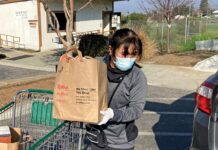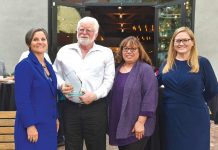With baby boomers beginning to enter their senior years, the
”
Graying of America
”
is now under way. Our society will begin to see major changes in
its demographics.
With baby boomers beginning to enter their senior years, the “Graying of America” is now under way. Our society will begin to see major changes in its demographics. According to Elizabeth Zelinski, professor at the University of Southern California, the population of Americans aged 65 and older is expected to double to 80 million by 2050. To gain a better understanding of who the elderly in our community are, what they are dealing with and how we can help, we need to know about their struggles, concerns and triumphs. We need to learn more about them and take into consideration the biological, psychological and social aspects of their lives. Public awareness and education now will contribute to accommodation and understanding in the near future.
The baby boomers have had a dramatic effect on our “population pyramid” (www.census.gov/ipc/www/idb). The pyramid is beginning to experience renovations which will greatly influence our future. In 1950, 0- to 5-year-olds represented the largest part of our population, the foundation of the pyramid. Those aged 85 and older made up the smallest part of our population, and were located at top of the pyramid. As the baby boomers age, the population pyramid continues to change. By 2020, the pyramid will transform into a square and by 2050 – for the first time in history – those aged 85 and older will constitute one of the largest portions of our population.
From advertising to architecture, from public transportation to traveling abroad, from health care to social security, we will experience transformations in our lives. The World Health Organization has noted the aging of the world’s population and has emphasized the growing need for older people’s needs to be considered in a range of contexts. Our recognition and consideration of “needs” is necessary if we want to create, contribute to and live in a cohesive intergenerational society.
I will graduate in December from the University of San Francisco with a bachelor’s degree in communication studies and a minor in gerontology. People always ask, “What do you want to do, talk to the elderly?” My reply is always an enthusiastic “Yes!” But I want to talk to everyone about the elderly. I want to relay what I’ve learned to the public; I don’t want it kept in the classroom or the conference room. I want to share what I know and share what senior citizens know. I want people of all ages to consider the daily realities involved with growing older, so much so that I will pursue a master’s degree in gerontology in the fall of 2008.
I want to be a liaison; a go-between who spends her time building a bridge of understanding in the generation gap. I thought Gilroy, my hometown, would be an excellent place to start. According to the 2000 U.S. Census Bureau, 7.1 percent of Gilroy’s population consists of residents over the age of 65, while 19 percent are between the 45 and 64. A quick flip through the South Valley phone directory indicates that Gilroy, Hollister, Morgan Hill and San Martin boast at least 10 senior-specific housing communities and eight convalescent homes. Gilroy even has a senior citizen crossing sign at the intersection of First Street and Santa Teresa Boulevard.
I want to thank South Valley Newspapers for giving me the opportunity to further investigate and publicize the myriad of issues facing both our elderly and aging population. Questions and concerns for the elderly – and their adult children – may go unanswered without such coverage. This column will feature real life issues our elderly relatives, friends, neighbors, customers and patients experience. The possibilities for helping our local senior citizens are as endless as the possibilities for learning from them.
If you have questions or would like to share your concerns about being or growing older, I invite you to contact me so that I can explore your topic in future columns. I will also make a phone number available for those of you who don’t have access to a computer – but until then please feel free to contact me at da*********@*****on.net or send your questions in care of this newspaper.











